2016-07-11
DOE has just released a market study on OLED lighting, entitled OLED Lighting Products: Capabilities, Challenges, Potential. A related webinar will be held on July 28 from 1:00 – 2:00 p.m. EDT.
Continue reading →
2016-06-30
In written comments filed with the U.S. Department of Energy (DOE), the National Electrical Manufacturers Association (NEMA) emphasized its support for federal energy conservation standards and efforts by U.S. Customs and Border Protection (CBP) to prevent noncompliant products from entering the country. However, NEMA expressed concern about the DOE’s strategy regarding noncompliant products and recommends that government agencies better utilize available data to protect consumers from illegal imports.
Continue reading →
2016-06-29
The U.S. Department of Energy's CALiPER program has released a new Snapshot report on LED downlights. Among the key findings of the new Snapshot, which is based on DOE's LED Lighting Facts® database:
Continue reading →
2016-06-20
Thank you to all who attended DOE's Connected Lighting Systems Workshop, held June 8–9, 2016, in Santa Clara, CA. More than 170 attendees joined DOE and top lighting and IoT experts to examine key barriers and issues impacting development of connected lighting systems. For those new to connected lighting, two pre-workshop introductory sessions were held on communications and cybersecurity fundamentals.
Continue reading →
2016-06-13
The U.S. Department of Energy has announced the competitive selection of nine solid-state lighting (SSL) projects to receive funding, in response to the funding opportunity announcement (FOA) DE-FOA-0001364 (“Solid-State Lighting Advanced Technology R&D – 2016”). These 18- to 24-month projects will focus on the following existing DOE SSL R&D program areas:
Continue reading →
2016-06-07
DOE has published the 2016 edition of the Solid-State Lighting R&D Plan. It was developed in conjunction with community experts through input received at roundtable meetings held in September and October 2015 and at the DOE SSL R&D Workshop held in February 2016 in Raleigh, NC. The discussions covered R&D needs for LED and OLED technologies, ranging from core technology research and product development through manufacturing R&D.
Continue reading →
2016-06-02
MaxLite, a leading global manufacturer of LED lighting solutions, announces it has become one of the first companies in the lighting industry to join the U.S. Department of Energy (DOE) as an Innovation Partner in its Zero Energy Ready Homes (ZERH) program.
Continue reading →
2016-05-18
The U.S. Department of Energy Office of Science and Energy Efficiency and Renewable Energy have awarded three Small Business Innovation Research (SBIR) grants targeting advances in solid-state lighting (SSL) technology. These Phase I grants will explore the technical merit and commercial potential of different innovative concepts or technologies that are expected to contribute to the achievement of the price and performance goals described in DOE’s SSL R&D Plan.
Continue reading →
2016-05-17
DOE recently announced two lab funding opportunities, including the DOE’s Technologist in Residence program and The Manufacturing Innovation through Energy and Commerce pilot project.
Continue reading →
2016-05-13
DOE’s Connected Lighting Systems Workshop will gather top experts in the lighting, semiconductor, and IT industries for cross-cutting dialogue that expands on critical discussions held at an inaugural DOE SSL meeting in November 2015.
Continue reading →
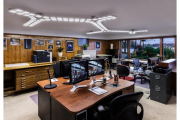 2016-04-27
2016-04-27
The U.S. Department of Energy has released a report on the first GATEWAY demonstration involving OLED lighting. Aurora Lighting Design, Inc., in Grayslake, IL, installed Acuity Brands' TriliaTM OLED lighting system in September 2014. The new report recounts the experiences of this pioneering project and provides valuable feedback to OLED and component manufacturers as well as luminaire manufacturers.
Continue reading →
2016-04-26
The U.S. Department of Energy's GATEWAY program has released the third report in a series documenting the performance of LED luminaires in the Yuma (Arizona) Sector Border Patrol Area, on the U.S.-Mexico border, which is a high-temperature, high-solar-radiation environment. The first report compared six LED luminaires installed in February 2014 to the incumbent high-intensity discharge (HID) lighting system, and the second discussed the performance of the LED system after 2,500 and 5,000 hours of operation, including unanticipated illuminance changes.
Continue reading →
2016-04-22
The U.S. Department of Energy's Building Technologies Office Emerging Technologies (ET) program is announcing the availability of up to $3 million in funding to develop energy efficient replacement lamps in general illumination applications. The Energy Independence and Security Act of 2007 set a 45 lumen per watt minimum efficacy backstop requirement effective beginning January 1, 2020. ET's Lighting Alternatives Maximizing Performance and Suitability (LAMPS) program seeks to create suitable high-efficacy lighting options for incandescent lamps where none exist today.
Continue reading →
 2016-04-18
2016-04-18
DOE’s Connected Lighting Systems Workshop will gather top experts in the lighting, semiconductor, and IT industries for cross-cutting dialogue that expands on critical discussions held at an inaugural DOE SSL meeting in November 2015.
Continue reading →
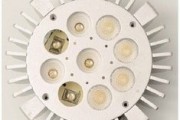 2016-03-23
2016-03-23
The U.S. Department of Energy's CALiPER program has released Report 20.5, which is part of a series of investigations on LED PAR38 lamps. The new report builds on CALiPER Report 20.4 by providing a tear-down analysis of its 32 LED PAR38 lamp models and also performing additional analyses on the spectroradiometric data obtained using a specially developed automated long-term test apparatus.
Continue reading →
2016-03-23
The U.S. Department of Energy (DOE) Building Technologies Office (BTO) Emerging Technologies Program is seeking information from the public regarding lamps in general illumination applications.
Continue reading →
2016-03-17
The U.S. Department of Energy (DOE) has created a number of useful new resources to help stakeholders understand IES TM-30-15, which describes a new method for evaluating light-source color rendition.
Continue reading →
2016-03-10
The U.S. Department of Energy Office of Science and Basic Energy Sciences has awarded two Small Business Innovation Research (SBIR) Phase II Release 1 grants related to solid-state lighting. Phase II SBIR grants are awarded to successful Phase I Release 1 recipients. The FY16 Phase II Release 1 awards—each worth about US $1 million and 24 months in duration—will explore the technical merit or feasibility of an innovative concept or technology.
Continue reading →
 2016-03-08
2016-03-08
In November 2015, top experts in the lighting, semiconductor, and IT industries convened in Portland, OR, to start a cross-cutting dialogue on how best to take advantage of the imminent intersection between lighting systems and the fast emerging IoT. Chief among the outcomes was the consensus that collaboration is essential to realize the full promise of connected lighting systems.
Continue reading →
2016-03-01
Noah Horowitz is a senior scientist in NRDC's energy program gives an in-depth review of the latest DOE light bulb energy efficiency standards and its impact in the U.S. market.
Continue reading →
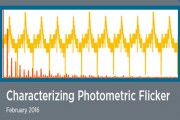 2016-02-23
2016-02-23
The U.S. Department of Energy (DOE) has published a report on the performance of newly commercially available flicker meters. The purpose of the study was simply to report on the availability and performance of these meters. Flicker is garnering increased attention across the lighting community, and gaining a better understanding of why flicker matters and how much it varies among lighting products is becoming more and more essential to proper lighting design.
Continue reading →
2016-02-23
New light bulb energy efficiency standards proposed by the U. S. Department of Energy (DOE) completed the gradual phase-out of inefficient everyday incandescent bulbs required under a 2007 law passed by a bipartisan Congress with industry support. And once all of America's approximately 4 billion lighting sockets contain energy-saving bulbs that meet the standards, U.S. consumers and businesses will save about $12.5 billion every year--and gain cleaner air and a healthier environment.
Continue reading →
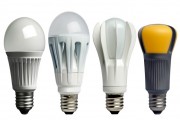 2016-02-18
2016-02-18
The Department of Energy released a new proposed efficiency rule for General Service Lamps, better known as lightbulbs. This proposed rule will make it easier for consumers to make cost-effective, energy efficient choices for lighting their homes and offices. This proposal marks the next step of a public process that has been underway for more than two years and will continue over the course of this year.
Continue reading →
2016-02-17
DOE's CALiPER program has published a new Snapshot Report on LED MR16 lamps, which updates a similar Snapshot Report published in January 2014. In the past two years, LED technology has progressed rapidly, but the progress has been much slower for LED MR16s. The increase in mean efficacy is about half of that seen for other categories, and lumen output and center beam intensity (CBCP) haven't notably increased in recent years either. There are still no listed lamps at a given beam angle that meet the expected CBCP values for a 50W halogen MR16 using the ENERGY STAR® calculator – although several now meet the minimum threshold required by ENERGY STAR for claiming equivalency to a 50W halogen MR16.
Continue reading →
2016-01-26
The U.S. Department of Energy Office of Science has awarded six Small Business Innovation Research (SBIR)-Small Business Technology Transfer (STTR) grants to proposals targeting advances in solid-state lighting (SSL) technology. The six Phase I Release 1 grants will explore the technical merit and commercial potential of different innovative concepts or technologies that are expected to contribute to the achievement of the price and performance goals described in DOE’s SSL R&D Plan.
Continue reading →
2016-01-22
In an effort to advance the lighting industry, executives from Hubbell Lighting will take an active role in the Department of Energy's (DOE) 13th annual SSL R&D Workshop being held on February 2-4, 2016 in Raleigh, N.C.
Continue reading →
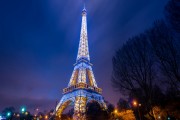 2015-12-08
2015-12-08
Stand next to a traditional incandescent bulb and a light-emitting diode (LED) bulb, and you will feel the difference as much as see it. Both produce the same amount of light, yet the incandescent bulb is too hot to touch. All that excess heat is wasted energy.
Continue reading →
2015-12-01
On December 10, there will be a 60-minute live webinar to provide information on interior lighting, with a focus on troffers and how new technology can significantly reduce energy use in higher education spaces. Colleges and universities in the U.S. spend around $1.10 per square foot on electricity, with lighting representing 31% of energy usage.
Continue reading →
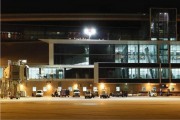 2015-11-11
2015-11-11
The U.S. Department of Energy's GATEWAY program has released a report on a trial installation of LED apron lighting at Philadelphia International Airport (PHL). In addition to reducing energy, PHL also hoped to reduce required maintenance, reduce light pollution, and increase safety with an improved lighting system.
Continue reading →
2015-11-04
The U.S. Department of Energy's (DOE) Office of Science plans to announce a funding opportunity on November 30, 2015, for the Small Business Innovation Research (SBIR) and Small Business Technology Transfer (STTR) Programs. Under this grant opportunity, DOE will seek applications for funding directed toward FY16 Phase I, Release 2 projects. Topics for this funding opportunity were released on schedule on November 2, 2015, and can be downloaded at //science.energy.gov/sbir/funding-opportunities. The topic title is “Buildings,” and the subtopic title is “Energy Efficient Solid-State Lighting Luminaires, Products, and Systems” (see topic 11a, page 42).
Continue reading →
 2016-04-27
2016-04-27
 2016-04-18
2016-04-18
 2016-03-23
2016-03-23
 2016-03-08
2016-03-08
 2016-02-23
2016-02-23
 2016-02-18
2016-02-18
 2015-12-08
2015-12-08
 2015-11-11
2015-11-11